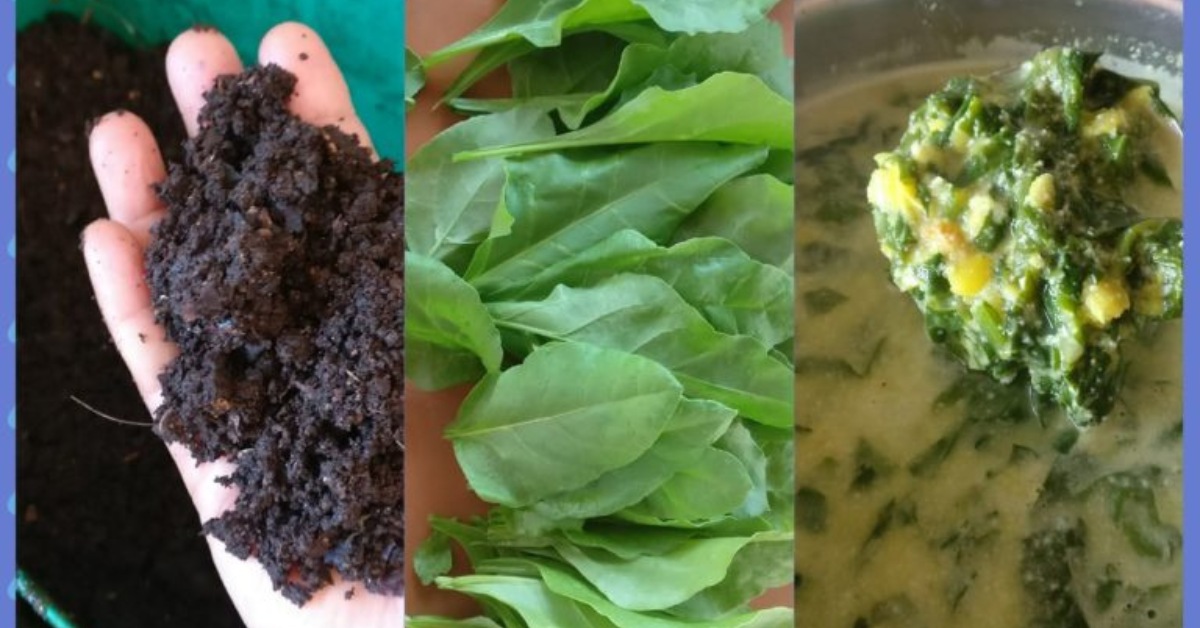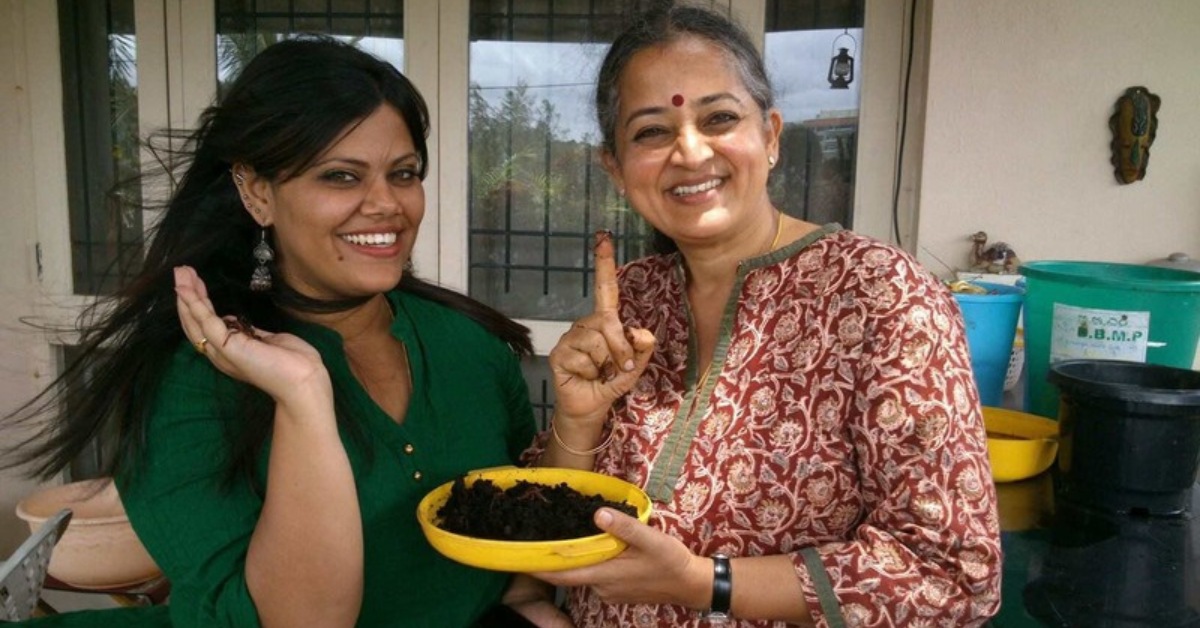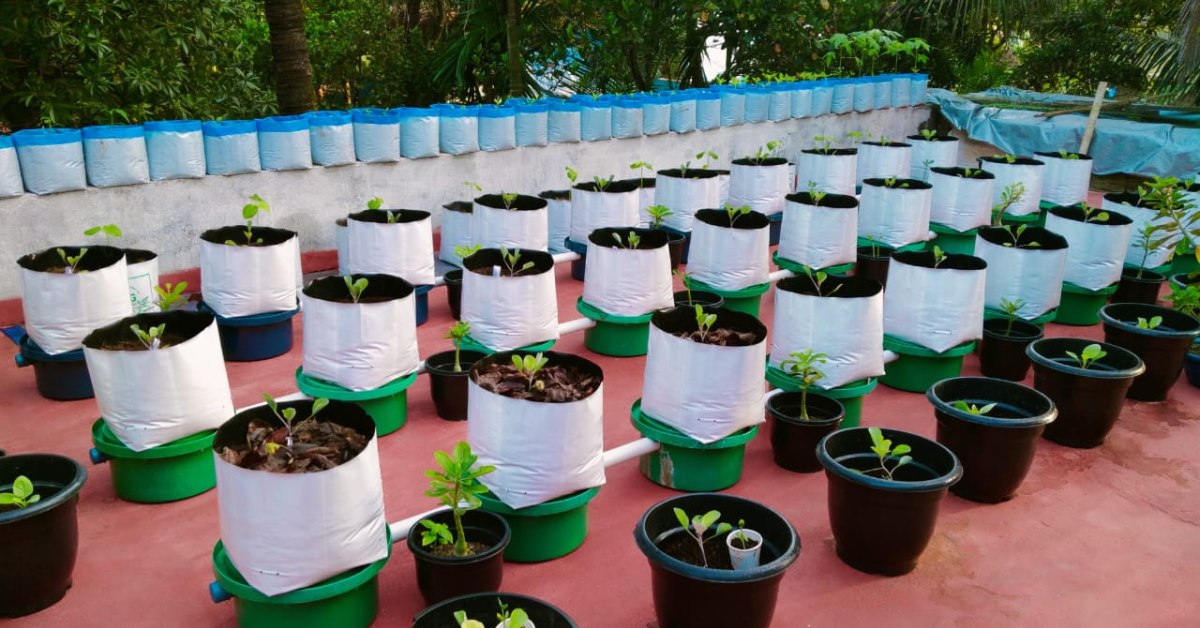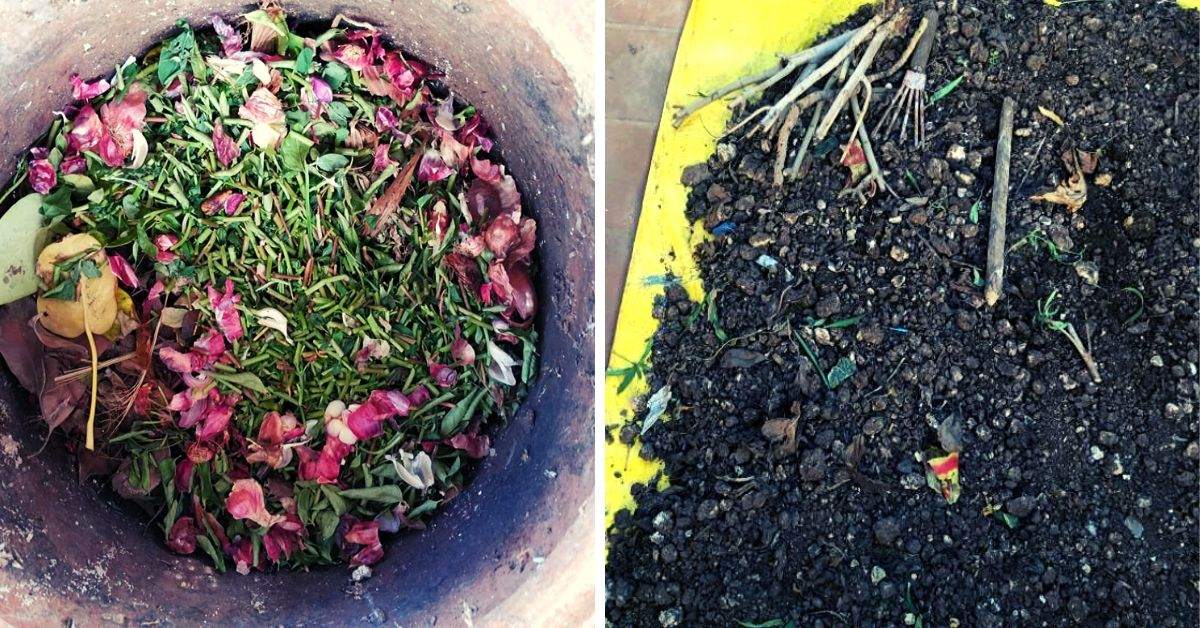5 Easy Ways Indians Are Turning Kitchen Waste Into Manure at Home
No one likes to deal with kitchen waste. It gets mushy, heavy, and develops a nasty odour if left in the bin too long. These soggy parcels often end up in landfills, clogging up our cities and harming the environment.
But what may seem like waste to the common eye is actually nourishment in disguise. These five individuals found creative, low-cost ways to reduce their household waste by turning it into manure — giving back to the earth, one peel at a time.
 Household waste can be converted into nourishing manure, giving back to the earth one peel at a time. Picture source: Vani Murthy
Household waste can be converted into nourishing manure, giving back to the earth one peel at a time. Picture source: Vani Murthy
1. Composting in a PVC pipe
What he did: T S Mahadevaswamy, a retired paper mill manager from Shivamogga, Karnataka, built a DIY compost system using a six-foot PVC pipe buried partially in the ground. He began by adding 1 kg cow dung, 10–15 litres of water, and 1 kg jaggery to kickstart bacterial growth. Kitchen waste was added regularly with a mug of water weekly. After eight to 12 months, rich compost was ready at the base.
What makes it unique: The method is underground, odour-free, and requires no stirring. It’s made entirely with easily available materials and needs minimal upkeep.
What you can learn: If you have outdoor space, try this long-term composting setup. Ensure the pipe is upright with drainage at the bottom. Chopping your waste speeds up decomposition.
2. Vermicomposting in apartments
What she did
Vani Murthy, an environmentalist from Bengaluru, composts in her flat using red wigglers (earthworms) in moist, dark bins. Fruit peels, coffee grounds, and garden scraps go in, and over time, the worms turn it into high-quality vermicompost.
What makes it unique: Her system is compact and entirely indoor-friendly. By maintaining moisture and darkness, the worms thrive without odour or mess — even in urban apartments.
 Manure made at home is completely safe to touch with your bare hands and are packed with nutrients for your plants.
Manure made at home is completely safe to touch with your bare hands and are packed with nutrients for your plants.
What you can learn: Use a bin with holes for airflow and bedding like coconut coir. Add only raw, plant-based waste and avoid dairy or meat. Keep the bin in a dark, quiet spot and harvest compost in a few weeks.
3. Terrace composting for profit
What he did: Dananjayan A V, a former school manager from Payyanur, Kerala, started composting kitchen waste using dry leaves, twigs, and poultry litter to support his terrace farm. Eventually, he began selling his organic compost to nearby farmers.
What makes it unique: It’s a self-built, machine-free composting model that turned into a small business. By balancing green and brown materials, he created a fast, low-cost method.
 Rooftop farming transforms unused urban rooftops into thriving green spaces for growing vegetables, fruits, and herbs. Picture source: Dananjayan A V
Rooftop farming transforms unused urban rooftops into thriving green spaces for growing vegetables, fruits, and herbs. Picture source: Dananjayan A V
What you can learn: Mix kitchen waste with dry matter like leaves or newspaper. A handful of cow or poultry dung can help accelerate composting. Stir every few days to keep it aerated.
4. Fish waste and fruit peels
What she did: Pauline Shyama from Chennai ferments a mix of fish waste and jaggery in a sealed container for 40 days to create a nutrient-rich fertiliser. She also uses powdered eggshells and banana peel water to boost her garden’s growth.
What makes it unique: The method relies on fermentation, not decomposition — no need for a compost bin or turning. It’s compact, easy, and highly effective for flowering plants.
What you can learn: Mix equal parts fish waste and jaggery in a sealed jar. Leave it for 40 days — no water or stirring required. Use crushed eggshells and banana peel soak as nutrient boosters.
5. Composting in buckets and bins
What she did: Manjushree Ladiya, a terrace gardener from Ghaziabad, composts kitchen waste in reused paint buckets. She layers wet waste with dry leaves and adds a splash of buttermilk or compost culture to speed up the process.
 Kitchen waste composts into nutritious manure in a matter of a few weeks or months. Picture source : Pauline Shyama
Kitchen waste composts into nutritious manure in a matter of a few weeks or months. Picture source : Pauline Shyama
What makes it unique: Her setup is extremely affordable and easy to replicate using household containers. With proper layering and airflow, it stays odour-free and efficient.
What you can learn: Use any plastic bin or bucket with a lid. Layer raw food waste with dry leaves or paper, and add a bit of curd or compost starter. Avoid citrus or oily leftovers. Stir every few days and the compost is ready in three to four weeks.
Edited by Khushi Arora
News